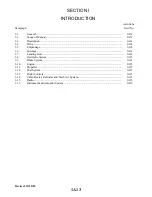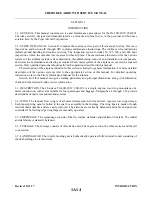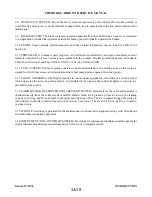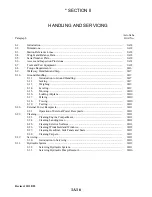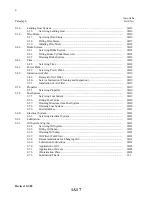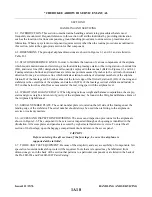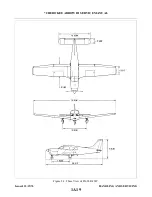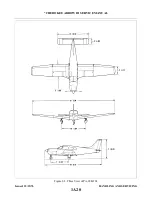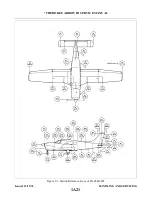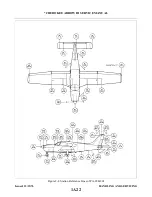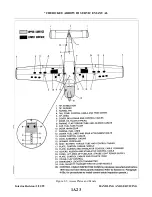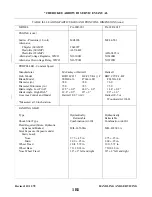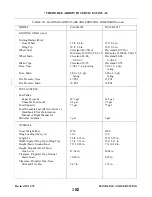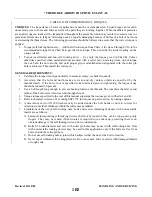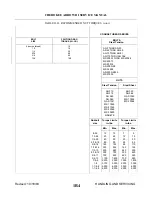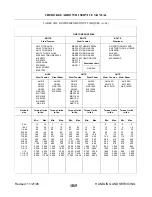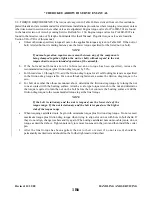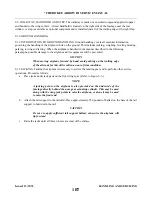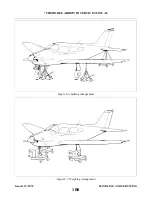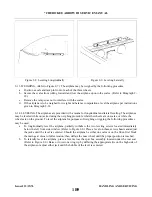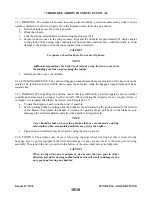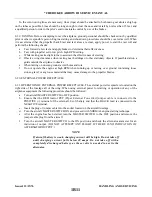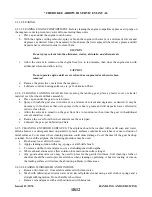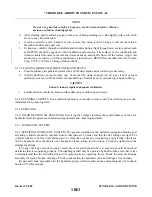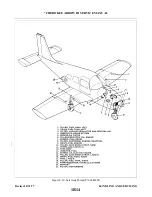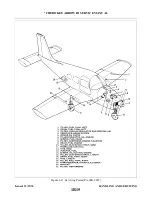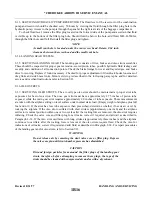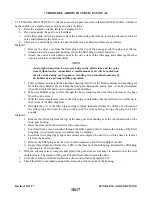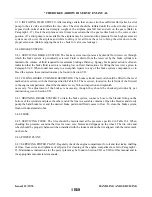
TABLE II-II. RECOMMENDED NUT TORQUES
TORQUES: The importance of correct application cannot be overemphasized. Undertorque can result in
unnecessary wear of nuts and bolts as well as the parts they are holding together. When insufficient pressures
are applied, uneven loads will be transmitted throughout the assembly which may result in excessive wear or
premature failure due to fatigue. Overtorque can be equally damaging because of failure of a bolt or nut from
overstressing the thread areas. The following procedures should be followed to assure that the correct torque is
applied:
1 . Torque (self-locking fasteners) — Add the friction torque from Chart A for sizes 8 through 7/16 to the
recommended torque from Chart B to get the final torque. This would be the actual reading on the
torque wrench.
2. Torque (castellated and non-self-locking nuts) — Use only the torque given in Chart B. Unless
otherwise specified, when castellated nuts are used with a cotter pin on moving joints, do not torque
the nut. Turn the nut onto the bolt until proper grip is established and alignment with the cotter pin
hole is achieved. Then install the cotter pin.
GENERAL REQUIREMENTS:
1. Calibrate the torque wrench periodically to assure accuracy; recheck frequently.
2. Ascertain that the bolt and nut threads are clean and dry (unless otherwise specified by the
manufacturer). If the bolt or nut is specified to be lubricated prior to tightening, the torque range
should be reduced 50 percent.
3. Use a bolt length long enough to prevent bearing loads on the threads. The complete chamfer or end
radius of the bolt or screw must extend through the nut.
4. Unique torques specified in the text of this manual supersede the torques given in Charts A and B.
5. Refer to the latest revision of Lycoming SSP 1776 for torques on parts used on Lycoming engines.
6. A maximum of two AN960 washers may be added under the bolt heads or nuts to correct for
variations in material thickness within the tolerances permitted.
7. Limitations of the use of self-locking nuts, bolts and screws including fasteners with non-metallic
inserts are as follows:
A. Fasteners incorporating self-locking devices shall not be reused if they can be run up using only
fingers. They may be reused if hand tools are required to run them up, providing there is no
obvious damage to the self-locking device prior to installation.
B. Bolts 5/16 inch diameter and over with cotter pin holes may be used with self-locking nuts. Nuts
with non-metallic locking devices may be used in this application only if the bolts are free from
burrs around the cotter pin hole.
C. Do not use self-locking nuts at joints which subject either the nut or the bolt to rotation.
D. Never tap or rethread self-locking fasteners. Do not use nuts, bolts or screws with damaged threads
or rough ends.
Revised: 10/18/83
1B3
*CHEROKEE ARROW III SERVICE MANUAL
HANDLING AND SERVICING
Summary of Contents for ARROW III
Page 4: ...THIS PAGE INTENTIONALLY LEFT BLANK 1A4...
Page 12: ...THIS PAGE INTENTIONALLY LEFT BLANK 1A12...
Page 94: ...Figure 4 2 Wing Installation Revised 2 13 89 1D22 CHEROKEE ARROW III SERVICE MANUAL STRUCTURES...
Page 171: ...lH3 INTENTIONALLY LEFT BLANK...
Page 172: ...lH4 INTENTIONALLY LEFT BLANK...
Page 286: ...THIS PAGE INTENTIONALLY LEFT BLANK Revised 2 13 89 2A8...
Page 528: ...INTENTIONALLY LEFT BLANK 2K10 THRU 2L24 2K10...

